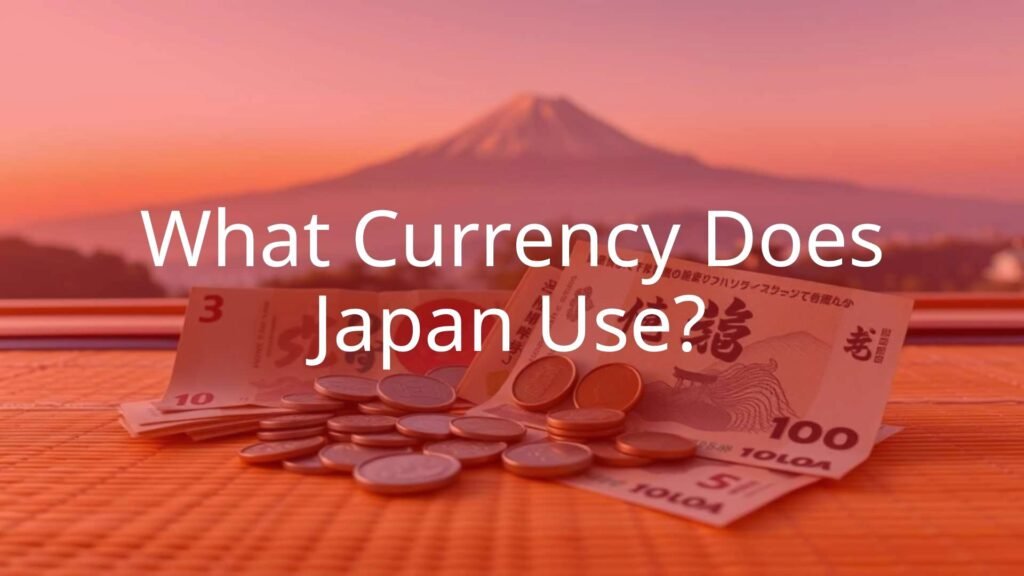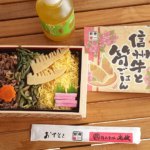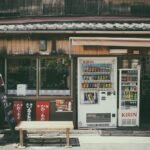If you are traveling to Japan or interested in its economy, you may ask: what currency does Japan use? The answer is simple: Japan uses the Japanese Yen. This currency has the code JPY and the symbol ¥. The yen is accepted everywhere in Japan, whether in big cities like Tokyo or quiet places like Kyoto. The yen is not just used in Japan; it’s one of the main currencies traded worldwide-right after the US dollar and the Euro. It also stands as the fourth largest reserve currency, showing Japan’s strong economy and major role in global finance.
Knowing about the yen means understanding its background, different values, and how it’s used in everyday life in Japan. Even though credit and debit cards are being used more, Japan still prefers cash, especially in smaller towns and for little purchases. So whether you’re buying food from a supermarket, taking a cab, or shopping at local markets, it’s helpful to have yen coins and bills handy. Let’s take a closer look at the Japanese Yen and what makes it unique.

Official Name and Symbol of Japanese Currency
Japan’s currency is called the Japanese Yen. In the world of finance, its international code is JPY. When you shop in Japan, prices will be marked with the ¥ sign. Occasionally you’ll see JP¥ written to make sure people don’t mix it up with the Chinese yuan, which uses the same symbol.
The yen is an important part of Japan’s economy. Japan has the third-largest economy in the world by nominal GDP (about US$5 trillion in 2020). Services make up about 69% of that total, showing a very active economy. Japan also has the second-biggest foreign currency reserves, about US$1.3 trillion. These facts help make the yen a steady and trusted currency globally.
Meaning and Pronunciation of Yen
The word “yen” comes from the Japanese word 圓 (en), which means “round.” This makes sense, since coins are round. The word en itself was taken from the Chinese “yuan,” which also means “round” and was used to describe the shape of Spanish and Mexican silver coins that made their way to Japan.
Japanese people say “en,” but “yen” became common in English. This started because the Japanese sound for “e” in older times was heard more like “ye” by Europeans who came to Japan in the 16th century. So, early language books wrote “yen” instead of “en.” Over time, “yen” stuck in English, even after the Japanese language changed its pronunciation. So, if you’re in Japan, locals will say “en”, but most foreigners say “yen.” It’s a small but interesting bit of history.
The History and Use of the Yen
The yen began with the New Currency Act of 1871, which set up a modern money system for Japan. Before this law, Japan had different kinds of money, with coins and paper from different local lords, which made trade and daily life confusing. After the Meiji Restoration, there was a need to use one type of currency throughout the country. Officials worked to make the yen the single currency for everyone.
The main idea was to have round coins and use the name “yen” instead of the old names like ryō, bu, and shu. The first gold yen coins were made in 1870, and Japan started making its own paper money a year later. By 1882, the Bank of Japan had control over how much money was made and used.
The value of the yen has changed a lot, especially after World War II, when Japan had high inflation and the yen lost much value. In 1949, the US fixed the yen at ¥360 to one US dollar. This stayed until 1971. After that, Japan let the yen’s value change with the market, but sometimes the government had to step in to keep it from rising or falling too much. The yen is now seen as a safe currency, often rising when there is global economic trouble.

Japanese Yen: Banknotes and Coins
The yen comes in both bills and coins, each with its own look and story. In July 2024, Japan released redesigned banknotes, but the old ones can still be used. Learning about these will help you prepare, as cash is still used for a lot of things in Japan-especially for small purchases and in the countryside.
It’s smart to have a mix of small bills and coins, as machines or shops might not accept large bills. Here is a look at Japan’s current money.
Banknote Denominations
- ¥1,000 Note: Blue, with Kitasato Shibasaburō (a famous doctor) on the front, and Hokusai’s “The Great Wave off Kanagawa” on the back.
- ¥2,000 Note: Very rare. Released in 2000 for a special event. Shows Shurei-mon gate from Okinawa and a scene from “The Tale of Genji.” Often not accepted in vending machines.
- ¥5,000 Note: Purple, with Tsuda Umeko (a leader in women’s education) and wisteria flowers.
- ¥10,000 Note: Brown, with Eiichi Shibusawa (an important businessman) and Tokyo Station’s red brick building.
| Denomination | Main Image | Color |
|---|---|---|
| ¥1,000 | Kitasato Shibasaburō / The Great Wave | Blue |
| ¥2,000 | Shurei-mon / Tale of Genji | Greenish |
| ¥5,000 | Tsuda Umeko / Wisteria | Purple |
| ¥10,000 | Eiichi Shibusawa / Tokyo Station | Brown |
These bills have designs to stop counterfeiting, such as special patterns and raised printing. ¥1,000 and ¥5,000 notes last for 1-2 years, while ¥10,000 notes typically last 4-5 years.
Coin Denominations
Japanese coins are made by the Japan Mint and come in six values:
- ¥1 Coin: Very light, made of aluminum. Has a young tree on it, and it actually floats on water if placed carefully!
- ¥5 Coin: Yellow and has a hole in the center. Pictures of rice, a gear, and the sea show farming, industry, and fishing.
- ¥10 Coin: Bronze. Byodo-in Phoenix Hall is on the front.
- ¥50 Coin: Silver-colored, with a hole, and shows three chrysanthemums.
- ¥100 Coin: Silver-colored, has cherry blossoms. Some older coins were made for events and are collectible.
- ¥500 Coin: Biggest coin, gold-colored, heavy, with paulownia plants on one side and bamboo plus orange leaves on the other. These coins have extra security to stop fake copies.
| Coin | Color | Key Feature |
|---|---|---|
| ¥1 | Silver (aluminum) | Young tree, floats on water |
| ¥5 | Gold | Hole, rice/gear/sea, no number |
| ¥10 | Bronze | Byodo-in Hall |
| ¥50 | Silver | Hole, chrysanthemums |
| ¥100 | Silver | Cherry blossoms |
| ¥500 | Gold | Paulownia, bamboo, orange, hologram |

Japan once had coins called “sen” and “rin” as smaller units, but these are no longer used. Today, ¥1 is the smallest value.
Japanese Currency Exchange Rates and Value
The value of the yen is decided mostly by buying and selling in the global market. The main things that change its value are Japan’s economic policies, trade with other countries, and financial flows. The yen is one of the most traded currencies, so its exchange rate is paid close attention to by investors and businesses.
Starting in the 1990s, Japan’s central bank kept interest rates very low to try to help its economy grow. This made the yen cheaper in comparison to other major currencies like the US dollar. Many investors borrowed yen at low rates and changed it into other currencies for better returns, which also kept yen values lower.
Historic and Recent Exchange Rates
The yen’s value has changed a lot over time. Here is a quick timeline:
- Before WWII: 1 USD ≈ 3.6 yen
- After WWII: Yen dropped sharply, reaching around 600 per USD in 1947
- 1949-1971: Fixed at ¥360 per USD
- 1973: Major currencies began to float; yen started to rise in value
- 1985: Plaza Accord led yen to nearly double in value, reaching around ¥128 per USD by 1988
- 1995: Yen peaked under 80 per USD
- 2002: Dropped to ¥134 per USD
- 2024: Over ¥161 per USD, the weakest in decades
This recent fall in value is mostly because interest rates stayed very low in Japan while other countries, especially the US, raised theirs. With better returns available outside Japan, investors sold yen for other currencies. Japan’s government sometimes steps in to try and support the yen, but the downward trend is likely to continue for a while according to some financial experts.
How to Get Japanese Yen
Getting yen for your trip is simple, but picking the best way can help you avoid extra fees. Cash is still commonly used in Japan, especially for small items or in rural places. While more places now accept cards, cash is safer to have just in case.
In most stores, you’ll use a small tray to hand over money to the cashier, which is a common practice. Tipping is not needed in Japan, so no need to include that in your budget.
Where to Exchange Money
You can exchange your money for yen either before you leave or after you arrive in Japan. Many people get better rates in Japan than at home, but it’s smart to bring a bit of yen for your first expenses. Some common places:
- Airports: Major airports like Narita or Haneda have currency exchange counters, but rates are often not as good as elsewhere.
- Banks and Money Changers: Look for “Authorized Foreign Exchange” signs in bigger cities. Banks are usually open weekdays, 9 am to 3 pm. They often have better rates than airports.
- Hotels and Department Stores: Some large hotels and department stores can exchange money, but usually with higher fees and worse rates.
Check current rates online (with sites like XE or Wise) before exchanging. Rates change daily, so check often to get the best deal.
Withdrawing Yen from ATMs
Getting cash from ATMs is often easy and gives a fair exchange rate. Not all ATMs work with overseas cards, so here are your best options:
- 7-Eleven (Seven Bank) ATMs: Found almost everywhere (especially in 7-Eleven stores) and available 24/7. Offer English and other languages. Accept most major cards.
- Japan Post Bank (Yūcho Ginkō) ATMs: With over 26,000 machines, these can be found in post offices, malls, and train stations. Most are open long hours, and they accept many international cards.
- Other ATMs: E-net ATMs, often in Family Mart stores, also handle foreign cards well.
When using an ATM, always choose to be charged in yen, not your home currency. This way your bank does the conversion, usually at a better rate. Check with your bank before leaving to see about withdrawal or transaction fees. Tell your bank about your trip to avoid any card issues.
If you want to avoid foreign fees altogether, you can use a travel card (like the Wise card). You load money onto it, switch to yen at a good rate, and then use it normally.

Japanese Currency FAQs
Handling money in another country can be confusing. Here are some common questions about Japanese money, along with clear answers to help your trip run smoothly.
Can I Use Foreign Currency in Japan?
No, you generally cannot use foreign money in Japan. Japanese yen is required for almost all purchases. Some rare exceptions exist in areas focused on tourists or duty-free stores, but you should not count on it. Credit cards such as Visa, MasterCard, and JCB are more welcome now, mostly in big cities; still, cash is usually needed for small shops, restaurants, traditional inns, vending machines, or places outside the city. Bringing yen with you is always recommended. Foreign checks are almost never accepted.
How Much Yen Can I Bring In or Take Out?
There’s no hard limit on how much yen you can bring into or take out of Japan. However, if the total value you’re carrying-yen or any other currency-goes over 1,000,000 JPY (about US$10,000), you must declare it to Japanese customs on entry or exit. This is for international financial safety laws. Not declaring larger amounts could lead to fines or having your money taken. For most travelers, carrying less than this means no forms or special steps are needed.
Japanese yen represents more than just money-it holds stories of history, culture, and change. From the craft in its coins to the art on its banknotes, every piece tells about innovation and tradition. Knowing how to use and understand yen will not only help your travel go smoothly, but it also gives you a better sense of daily life and custom in Japan. Even as Japan modernizes, cash and the yen stay deeply connected to how people shop and do business. The yen is a lasting symbol of Japan’s economy and heritage, appreciated by visitors and locals alike.
- What Is a Maiko? - July 13, 2025
- What Does Domo Arigato Mean? - July 12, 2025
- What Does Naruto Mean? - July 12, 2025









